#1965 cannes film festival
Explore tagged Tumblr posts
Text


Ursula Andress photographed at Cannes Film Festival, France, May 24, 1965.
136 notes
·
View notes
Text


Charles Boyer and Olivia de Havilland at the Cannes Film Festival in 1965
23 notes
·
View notes
Text

Marisa Paredes
Spanish star of films by Pedro Almodóvar, Guillermo del Toro and Roberto Benigni, and a champion of leftwing causes
The actor Marisa Paredes, who has died suddenly aged 78, was renowned for her elegance and “calm grace, that gentle cheerfulness that she ignited with one look of her pale eyes”, in the words of Gilles Jacob, former president of the Cannes film festival. She is best known for her roles in six films directed by Pedro Almodóvar.
After seeing her in a play, Almodóvar cast her as Sor Estiércol (Sister Manure) in Entre Tinieblas (Dark Habits, 1983). Later, she starred in his surreal melodrama Tacones Lejanos (High Heels, 1991). For her performance as a writer of romantic novels in his slightly more sober La Flor de Mi Secreto (The Flower of My Secret, 1995), she was nominated for a Goya best actress award. She also featured in Almodóvar’s Oscar-winning Todo Sobre Mi Madre (All About My Mother, 1999).
She became one of Spanish cinema’s great figures, but was also outspoken throughout her life in support of leftwing causes. As president of Spain’s film academy from 2000 to 2003, she attacked the participation of José María Aznar’s Conservative government in the planned invasion of Iraq. Her televised speech at the annual Goya awards in 2003 helped mobilise mass demonstrations: “There is no need to be afraid of culture, entertainment or freedom of expression, and much less satire or humour. We should be afraid of ignorance and dogmatism. We should be afraid of war.”
In the 1980s Paredes built a solid reputation in Spanish cinema, working with up-and-coming young directors, such as Fernando Trueba in Ópera Prima (Debut, 1980), Jaime Chávarri, Jaime Rosales and Agustí Vilaronga in Tras el Cristal (In a Glass Cage, 1986). Her performance in Vilaronga’s macabre anti-Nazi film was her own favourite. For José Sacristán’s comedy Cara de Acelga (Like Death Warmed Up, 1987) she was nominated for a Goya as best supporting actress.
In the 90s, her leading parts in Almodóvar films broadened her career into international cinema. She worked with Alain Tanner in France, Manoel de Oliveira in Portugal and shot two films with the Mexican Arturo Ripstein: Pintura Carmesí (Deep Crimson, 1996) and El Coronel No Tiene Quien le Escriba (No One Writes to the Colonel, 1999), a successful adaptation of a Gabriel García Márquez novel. She was in the Italian Roberto Benigni’s La Vita è Bella (Life Is Beautiful, 1997) and Guillermo del Toro’s El Espinazo del Diablo (The Devil’s Backbone, 2001). Over her six-decade career, she acted in more than 70 films.
The youngest of four daughters, Marisa was born in Madrid, in the block of flats on Plaza de Santa Ana where her mother, Petra (nee Bartolomé), was the concierge. Her father, Lucio Paredes, worked in the El Águila beer factory. These were years of hunger after the civil war (1936-39) and her family was poor. From the age of six, she told her mother she wanted to be an actor: the Teatro Español, one of the city’s main theatres, just across the square from her home, inspired her. Reasonably, her parents opposed this insecure career: they aspired for her to become a secretary. Paredes was always proud of her working-class origins. “My elegance comes from my grandfather, who was a farm-worker,” she would say.
Focused on her ambition, she left school aged 11, defeated parental opposition to study at the Madrid dramatic arts school and pushed her way into small film roles at the age of 14. In 1962 she met Fernando Fernán-Gómez, anarchist and brilliant actor and director, who helped mould both her acting and her view of the world. She acted in his film El Mundo Sigue (The World Continues, 1965).
In the 60s and 70s she worked in many films without breaking through to leading roles. The story was different on Televisión Española, where she acted in around 80 plays, often dramatisations of novels. “I had the good fortune that, as I don’t look Spanish ... when television was cultured and broadcast plays, I was in all the dramas of Chekhov, Dostoevsky, Ibsen. I was the Russian soul,” Paredes explained. She was an all-round talent, acting not just in theatre and highbrow TV, but in musicals, comedies and even a spaghetti western.
With her height, aristocratic bearing and blond hair, Paredes was reminiscent of a classic Hollywood star. Yet she was not vain: she had a warm smile and generous nature, and had the enthralling gift of great screen actors of expressing emotion with a single look or grimace.
She won prizes for her theatre, television and film work, and an honorary Goya for her career in 2018.
Paredes supported #MeToo vigorously and campaigned in the July 2023 general election for Sumar, the junior leftwing partner in Spain’s coalition government. As recently as 30 November, she read the manifesto in a demonstration against Israel’s actions in Gaza. She understood her political commitment in no narrow terms: “Freedom, education and culture are fundamental to human life. This is what remains. Art is what remains.”
Paredes had a daughter, María, with the film director Antonio Isasi-Isasmendi in 1975. From 1980 until her death she lived with José María Prado, director for 27 years of the Filmoteca Española (Spain’s film institute). She did not believe in marriage.
Prado and María survive her.
🔔 Marisa (María Luisa) Paredes Bartolomé, actor, born 3 April 1946; died 17 December 2024
14 notes
·
View notes
Text


Roman Polanski, Catherine Deneuve, Gerard Brach, Jean-Luc Godard at The Cannes Film Festival 1965. Photo by Claude Schwartz
#roman polanski#catherine deneuve#jean luc godard#gerard brach#claude schwartz#cannes#cannes 1965#1965
11 notes
·
View notes
Text

May 20th 1965 - John & Cynthia travel to Cannes Heathrow Airport. John and Cynthia go to the Cannes Film Festival, where Richard Lester's new film "The Knack ...and How to Get It" participated in the competition🌻🌻🌻
Via Facebook🌻
#60s icons#girlsofthesixties#60s models#the beatles wives#cynthia lennon#john lennon#john and cyn#1965
24 notes
·
View notes
Video
youtube
Congratulations to Cher on her installation in the Rock and Roll Hall of Fame!
Often referred to by the media as the "Goddess of Pop", she has been described as embodying female autonomy in a male-dominated industry. She is known for her distinctive contralto singing voice, for having worked in numerous areas of entertainment and for adopting a variety of styles and appearances. Cher rose to fame in 1965 as one half of the folk rock husband-wife duo Sonny & Cher before releasing her first solo top-ten singles "Bang Bang (My Baby Shot Me Down)" and "You Better Sit Down Kids". Throughout the 1970s, she scored the US Billboard Hot 100 number-one singles "Gypsys, Tramps & Thieves", "Half-Breed", and "Dark Lady", becoming the female solo artist with the most number-one singles in US history at the time.
Cher reached a new commercial peak in 1998 with the dance-pop album Believe, which featured pioneering use of Auto-Tune to distort her vocals, known as the "Cher effect". The title track became the number-one song of 1999 in the US and the best-selling single of all time by a female artist in the UK.
Having sold 100 million records, Cher is one of the world's best-selling music artists. Her accolades include a Rock and Roll Hall of Fame induction, a Grammy Award, an Emmy Award, an Academy Award, three Golden Globe Awards, a Cannes Film Festival award, the Billboard Icon Award, and awards from the Kennedy Center Honors and the Council of Fashion Designers of America. She is the only solo artist to date to have a number-one single on a Billboard chart in seven consecutive decades, from the 1960s to the 2020s. Her 2002–2005 Living Proof: The Farewell Tour became the highest-grossing concert tour by a female artist ever at the time, earning US$250 million (equivalent to $390 million in 2023). Aside from music and acting, she is noted for her trendsetting, elaborate outfits, political views, social media presence, philanthropic endeavors, and social activism, including LGBT rights and HIV/AIDS prevention.
9 notes
·
View notes
Text

Olivia de Havilland
*She confessed had an intense crush on Errol Flynn during the years of their filming, saying that it was hard to resist his charms.She and Errol Flynn acted together in eight movies: The Adventures of Robin Hood (1938), Captain Blood (1935), The Charge of the Light Brigade (1936), Dodge City (1939), Four's a Crowd (1938), The Private Lives of Elizabeth and Essex (1939), Santa Fe Trail (1940), and They Died with Their Boots On (1941) Both are also featured in a ninth film, Thank Your Lucky Stars (1943), although in separate scenes.
*Olivia accepted two film roles turned down by Ginger Rogers: To Each His Own (1946) and The Snake Pit (1948). She won an Oscar for To Each His Own (1946) and was nominated for The Snake Pit (1948). Rogers later regretted turning down the roles and wrote: "It seemed Olivia knew a good thing when she saw it. Perhaps Olivia should thank me for such poor judgment".
*She and Joan Fontaine are the first sisters to win Oscars and the first ones to be Oscar-nominated in the same year.Relations between Olivia and younger sister Joan Fontaine were never strong and worsened in 1941, when both were nominated for Best Actress Oscars. Their mutual dislike and jealousy escalated into an all-out feud after Fontaine won for Suspicion (1941). Despite the fact that de Havilland went on to win two Academy Awards of her own, they remained permanently estranged.As de Havilland once told a reporter: “My sister was born a lion, and I was born a tiger, and in the laws of the jungle, they were never friends.”
*James Cagney has said that she was his favorite leading lady. They appeared together in The Irish in Us (1935), A Midsummer Night's Dream (1935), and made a most memorable romantic pairing in The Strawberry Blonde (1941).
*In 1943, de Havilland battled Warner Brothers in court over her contract with the film company. This marked the beginning of the end of the studio system as the California Supreme Court ruled in favour of de Havilland who claimed Warner Bros. was forcing her to stay beyond her seven-year agreement. As of 1945, the “de Havilland rule” was put into place by all major Hollywood studios, effectively stating that companies could not sign actors to contracts that extended beyond a maximum of seven calendar years.
*In 1965 she became the first female president of the jury at the Cannes Film Festival.
*Revealed in a UK press interview that she was a great admirer of Queen Mother (whom she had earlier portrayed in the TV film The Royal Romance of Charles and Diana (1982)), stating that she hoped "to follow her example and live many years longer". De Havilland would go onto match and beat the Queen Mother's eventual lifespan of 101 years and 238 days old.De Havilland died at age 104.
#olivia de havilland#actress#actor#celebrity#celebs#old hollywood#hollywood#movies#golden age#golden age of hollywood#vibes#good vibes#aes#aesthetic#aesthetics#lifestyle#style#fashion#vogue#catwalk#mood#beautiful
58 notes
·
View notes
Text
youtube
Barton Fink is a 1991 American black comedy film written, produced, edited and directed by the Coen brothers. Set in 1941, it stars John Turturro in the title role as a young New York City playwright who is hired to write scripts for a film studio in Hollywood, and John Goodman as Charlie Meadows, the insurance salesman who lives next door at the run-down Hotel Earle.
The Coens wrote the screenplay for Barton Fink in three weeks while experiencing writer's block during the writing of Miller's Crossing. They began filming soon after Miller's Crossing was finished. The film is influenced by works of several earlier directors, particularly Roman Polanski's Repulsion (1965) and The Tenant (1976).
Barton Fink had its premiere at the Cannes Film Festival in May 1991. In a rare sweep, it won the Palme d'Or as well as awards for Best Director and Best Actor (Turturro). Although the film was a box office bomb, only grossing $6 million against its $9 million budget, it received positive reviews and was nominated for three Academy Awards.
Prominent themes of Barton Fink include the writing process; slavery and conditions of labor in creative industries; superficial distinctions between high culture and low culture; and the relationship of intellectuals with "the common man". The diverse elements of the film have led it to defy efforts at genre classification, with the work being variously referred to as a film noir, a horror film, a Künstlerroman, a postmodernist film and a buddy film. It contains various literary allusions and religious overtones, as well as references to many real-life people and events – most notably the writers Clifford Odets and William Faulkner, of whom the characters of Barton Fink and W. P. Mayhew, respectively, are often seen as fictional representations. Several features of the film's narrative, particularly an image of a woman at the beach which recurs throughout, have sparked much commentary, with the Coens acknowledging some intentional symbolic elements while denying an attempt to communicate any single message in the film.
#Barton Fink#coen brothers#movies#film#horror#horror movies#1990s#20th century#weird movies#movie trailer#Youtube
4 notes
·
View notes
Text


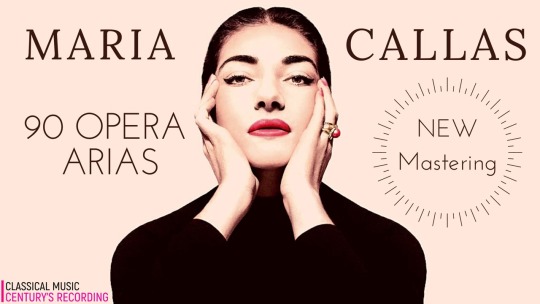
Maria Callas photographed by Cecil Beaton in 1957
Callas (2024) Callas is a film directed by Niki Caro with Noomi Rapace. Synopsis: A biopic about the operatic star, Maria Callas.
Noomi Rapace Star As Maria Callas announced at the Cannes Film Festival, Noomi Rapace is currently training her vocal cords in preparation for a starring role as Maria Callas.
The biopic is centered on the passionate relationship the singer had with Greek tycoon Aristotle Onassis lasting almost two decades. Caro will direct “Callas” from a screenplay she adapted from Alfonso Signorini’s biography “Too Proud, Too Fragile.”
Callas was a profoundly influential American opera singer of Greek heritage. She died in 1977 at the age of 53.
“This movie is about an extraordinary woman whose deepest desire is to lead an ordinary life with the man of her choice,” said Guido De Angelis. “Callas was la Divina, a goddess, who just wanted to be a normal woman; she found out she couldn’t. It sounds like an ancient myth.”
Rapace’s credits include “The Girl with the Dragon Tattoo,” “Prometheus,” “Sherlock Holmes: A Game of Shadows” and “The Drop.” Caro directed “McFarland USA,” “North Country” and “Whale Rider.”
---------------
Maria Callas sings Puccini: Tosca - 'Vissi d'Arte' at Covent Garden 1964
Maria Callas' final appearance on the operatic stage was in Tosca at Covent Garden's 1965 Royal Gala. For many opera lovers, Maria Callas and Tosca's Vissi d'Arte are inseparable. "I lived for art; I lived for love" became La Divina's cri de coeur, her swansong, the perfect expression of her own triumphs and tragedies. This unrivaled recording is from that legendary Zeffirelli production in 1964 and is one of just many jewels in the Maria Callas Live edition.
youtube
Vissi d'arte, vissi d'amore, non feci mai male ad anima viva! Con man furtiva quante miserie conobbi aiutai. Sempre con fè sincera la mia preghiera ai santi tabernacoli salì. Sempre con fè sincera diedi fiori agl'altar. Nell'ora del dolore perché, perché, Signore, perché me ne rimuneri così? Diedi gioielli della Madonna al manto, e diedi il canto agli astri, al ciel, che ne ridean più belli. Nell'ora del dolor perché, perché, Signor, ah, perché me ne rimuneri così?
31 notes
·
View notes
Text
Dolores del Rio - Hollywood's First Latin Superstar
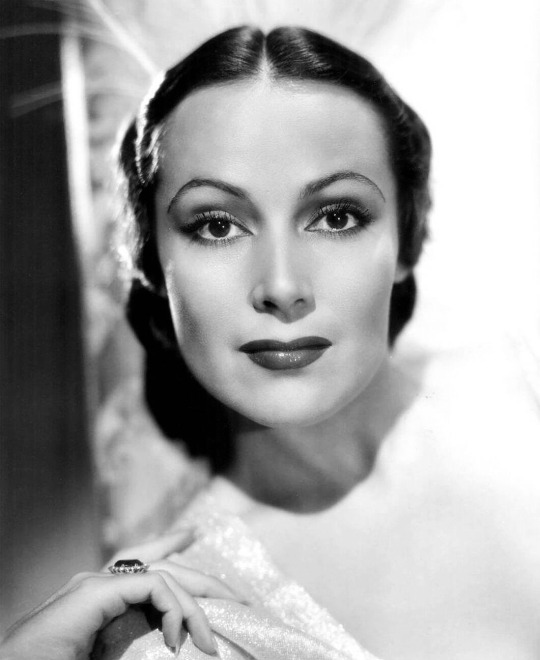
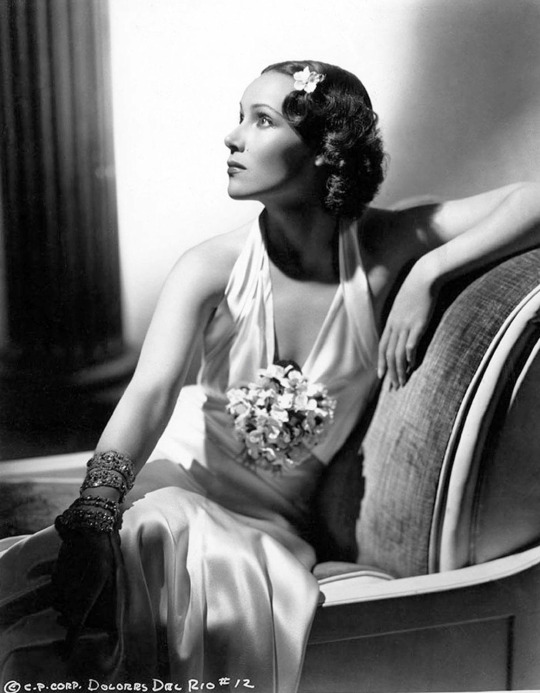
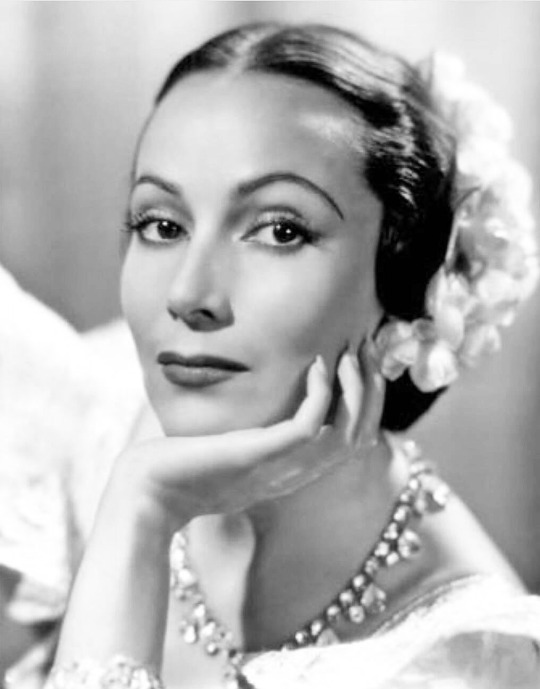
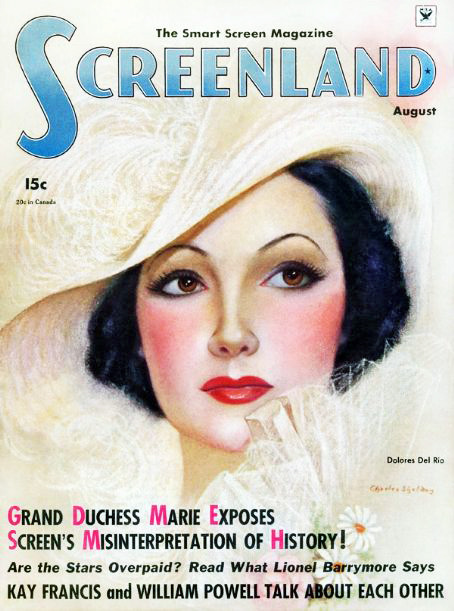
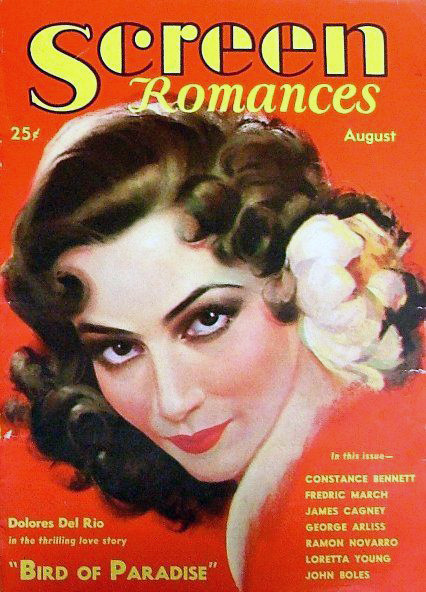
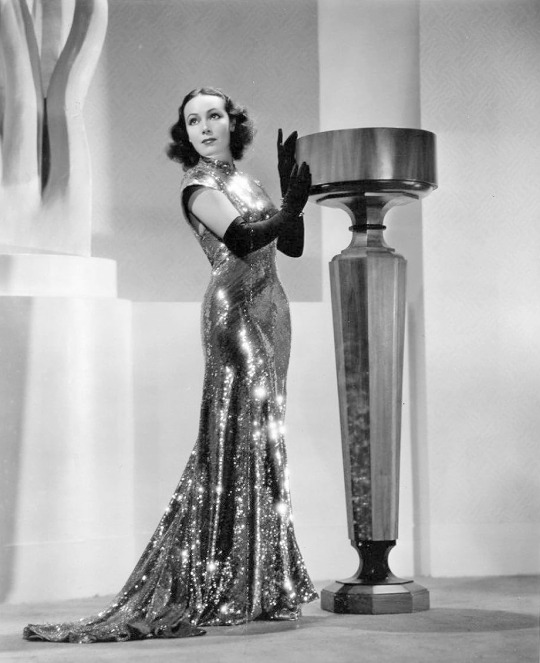
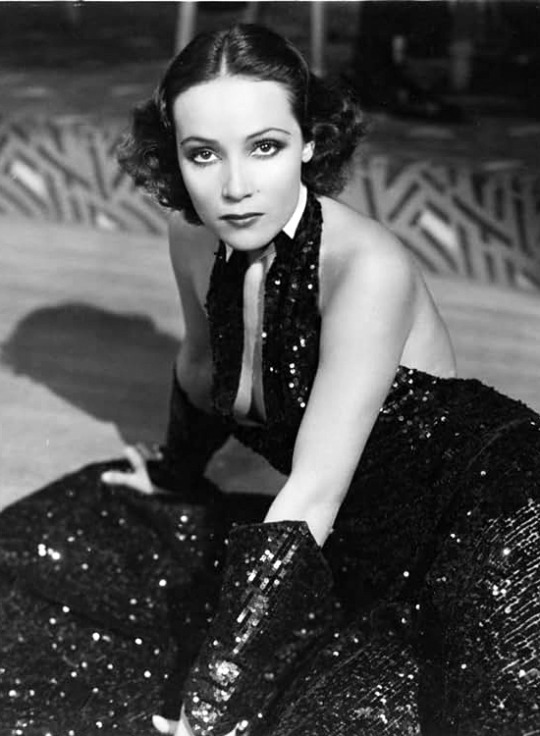
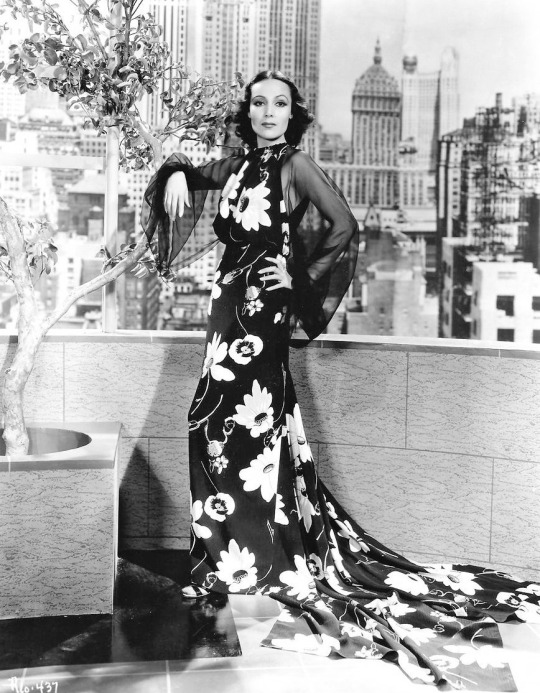
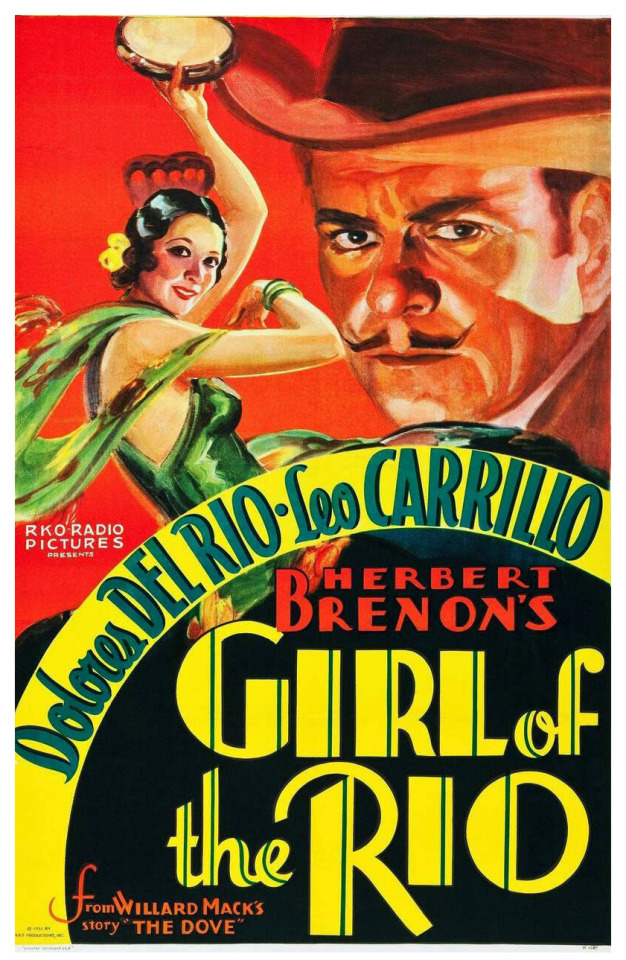
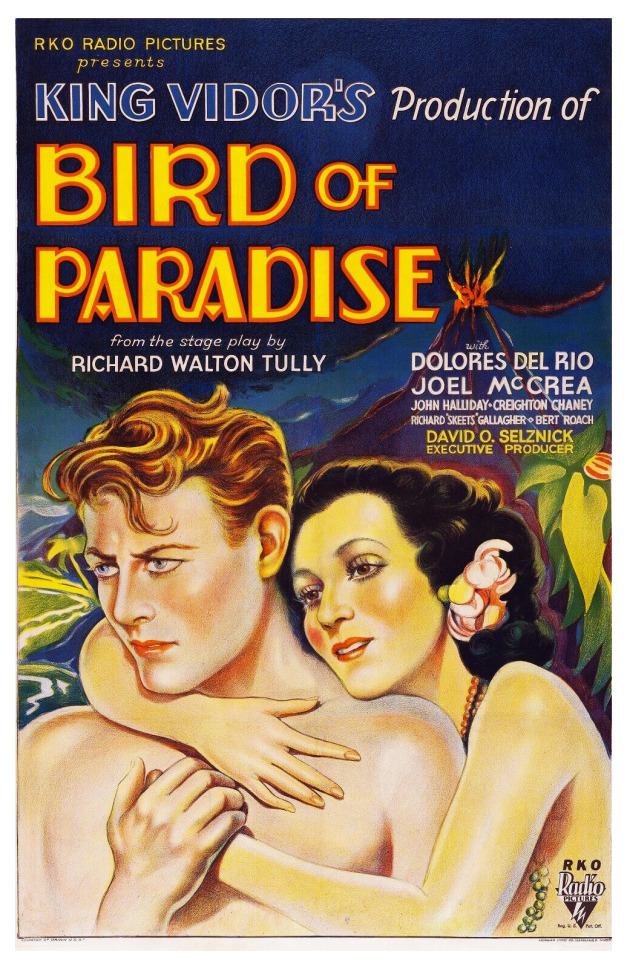
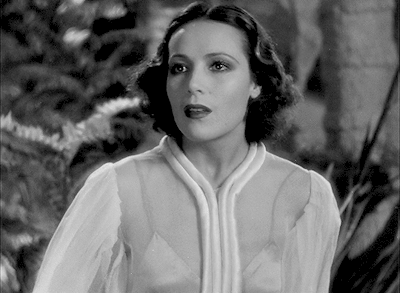
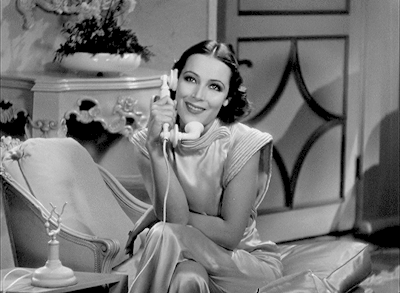
María de los Dolores Asúnsolo y López Negrete (born in Victoria de Durango, Durango on 3 August 1904), known professionally as Dolores del Río, was a Mexican actress whose career spanned more than 50 years. With her meteoric career in the 1920s/1930s Hollywood and great beauty, she is regarded as "Hollywood's First Latin Superstar."
Del Rio came from an aristocratic Mexican family whose lineage went back to Spain and the viceregal nobility. Her family lost all its assets during the Mexican Revolution. She developed a great taste for dance at a young age, which awakened in her when her mother took her to one of the performances of the Russian dancer Ana Pavlova.
In 1925, she met American filmmaker Edwin Carewe, an influential director at First National Pictures, who was in Mexico at the time. He convinced her to move to Hollywood. After a couple of years, United Artists became interested in her and signed her to a contract. Her career blossomed at the studio, and she made memorable films such as Ramona (1928) and Evangeline (1929). After her contract was terminated, she was hired by RKO Pictures ,then Warner Bros, and then 20th Century Fox.
Unfortunately, Latin stars had less opportunities in Hollywood then, and her career declined. She returned to her birth country, where she became one of the most important female figures in the Golden Age of Mexican cinema.
Del Río returned to Hollywood and made movies and TV shows. However, she continued to produce and star in Mexico in film and theater projects.
She died from liver failure at the age of 78 in Newport Beach, California. Her remains have been interred in the Rotonda de las Personas Ilustres in Mexico City since 2005.
Legacy:
Won the Silver Ariel Award (Mexican equivalent to the Oscars) for Best Actress three times: Las Abandonadas (1946), Doña Perfecta (1951), and El Niño y la niebla (1953); and was nominated two more times: La Otra (1946) and La Casa Chica (1949)
Awarded the Best Actress by the Instituto de Artes y Ciencias Cinematográficas de Mexico for Flor Silvestre (1943)
Named as one of the WAMPAS Baby Stars of 1926
Was the model of the statue of Evangeline in 1929 located in St. Martinville, Louisiana
Honored as one of the best dressed woman in America with the Neiman Marcus Fashion Award in 1952
Received a medal for her outstanding scenic work abroad from the Asociacion Nacional de Actores in 1957
Selected as the first woman to sit on the Cannes Film Festival jury, and even served as the Vice President, in 1957
Co-founded the Sociedad Protectora del Tesoro Artistico de México, responsible for protecting art and culture in México, in 1966
Given the Diosa de Plata Award by the Mexican Film Journalists Association twice: in recognition her contribution to Mexican film industry in 1965 and in commemoration of her 50-year career in 1975
Presented with a medal for her cultural contribution to the peoples of America by the Organization of American States in 1967
Was honored by Instituto Nacional de Bellas Artes y Literatura and the Mexico's Screen Actors Guild in 1970 with a tribute titled Dolores del Rio in the Art, where her main portraits and a sculpture by Francisco Zúñiga were exhibited
Was a spokeswoman of UNICEF in Latin America in the 1970s
Received the Golden Ariel Honorific Award in 1975 for her contribution to Mexican cinema
Formed the union group "Rosa Mexicano", which provided a day nursery for the children of the members of the Mexican Actor's Guild in 1970
Helped found the Cultural Festival Cervantino in Guanajuato in 1972
Received the Mexican Legion of Honor in 1975
Received a diploma and a silver plaque for her work in cinema as a cultural ambassador by the Mexican Cultural Institute and the White House in 1978
Awarded the George Eastman Award, given by George Eastman House for distinguished contribution to the art of film in 1982
Has been the namesake of the Diosa de Plata (Dolores del Río) Award for the best dramatic female performance by the Periodistas Cinematográficos de México since 1983
Has murals painted on Hudson Avenue in Hollywood painted by the Mexican-American artist Alfredo de Batuc in 1990 and at Hollywood High School in 2002
Is the namesake of Teatro Dolores del Rio, built in 1992, in Durango
Chosen to be one of The Four Ladies of Hollywood, a sculpture at Hollywood-La Brea Blvd in 1993
Realized a tribute by fashion designer John Galliano in his 1995 Fall/Winter collection, Dolores.
Stipulated that all her artworks be donated to the National Institute of Fine Arts and Literature of Mexico, for display in various museums in Mexico City, including the National Museum of Art, the Museum of Art Carillo Gil and the Diego Rivera & Frida Kahlo House-Studio
Included in a cameo in the Disney-Pixar animated movie Coco in 2017
Honored in three monuments in Mexico City: a statue located in the second section of Chapultepec Park, a bust located in the Parque Hundido, and another bust in the nursery that bears her name.
Honored with two streets named after her: Blvd. Dolores del Río, in Durango, Mexico, her hometown and Dolores del Rio Ave. in Mission, Texas
Honored with a Google Doodle on her 113th birthday in 2017
Has her star on the Hollywood Walk of Fame at 1630 Vine Street for motion picture
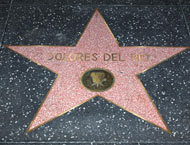
#Dolores Del Rio#Evangeline#Mexico#Latin#Latina#Hollywood's First Latin Superstar#Latin Actress#Mexican Actress#Mexicana#Golden Age of Hollywood#Film Classics#Old Hollywood#Vintage Hollywood#Hollywood#Hollywood Walk of Fame#Walk of Fame#Movie Legends#movie stars#1900s#28 Hollywood Legends Born in the 1900s
9 notes
·
View notes
Text
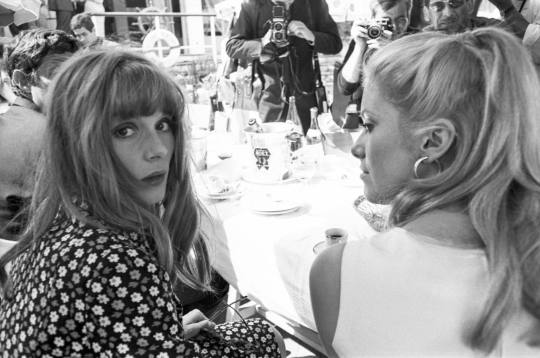
Françoise Dorléac and Catherine Deneuve photographed at Cannes Film Festival (1965)
#françoise dorléac#catherine deneuve#cannes film festival#1960s style#1965#1960s#catherine#*edits#*candids
209 notes
·
View notes
Text

That time the Daleks went to Cannes Film Festival in 1965
40 notes
·
View notes
Video
Anna Karina (1940-2019) by Truus, Bob & Jan too! Via Flickr: Spanish postcard by Postal Oscarcolor. Yesterday, 14 December 2019, the queen of the Nouvelle Vague, film actress, singer, and director Anna Karina (1940) has passed away. French, but Danish-born Karina was the muse of director Jean-Luc Godard and starred in eight of his films. “Today, French cinema has been orphaned. It has lost one of its legends,” culture minister Franck Riester tweeted. Anna Karina was 79. Anna Karina was born Hanne Karen Blarke Bayer in Solbjerg, Denmark, in 1940. Her mother was a dress shop owner and her father a ship's captain. Before she turned one, her father had left her mother. First she was raised by her maternal grandparents, where she stayed until the age of four. Then she spent time in and out of foster homes, before returning to live with her mother from the age of eight. She has described her childhood as 'terribly wanting to be loved' and as a child, she made numerous attempts to run away from home. She began her career in Denmark, where she sang in cabarets and worked as a model playing in commercials. At age 14, she appeared in the Danish short film Pigen og skoene/Girls and Shoes (Ib Schedes, 1954), which won a prize at the Cannes Film Festival. She studied dance and painting in Denmark and for a while made a living selling her paintings. In 1958, after a row with her mother, she hitchhiked to Paris. She had a break when, sitting briefly at the cafe Les Deux Magots, she was approached by a woman from an advertisement agency who asked her to do some photos. Hanne became a rising fashion model, and met Coco Chanel and Pierre Cardin. Chanel advised her to use as a professional name Anna Karina. She made a series of Palmolive ads in a bath covered in soapsuds, and was noticed by Jean-Luc Godard, then a film critic for Cahiers du cinéma. Godard was casting his debut feature film, À bout de souffle/Breathless (1960) starring Jean-Paul Belmondo. He offered her a small role, but she refused when he mentioned that there would be a nude scene. However, she eventually accepted his offer to play a major role in his second film, Le Petit Soldat/The Little Soldier (1960) with Michel Subor. Karina, who was still under 21 had to persuade her estranged mother to sign the contract for her. Anna Karina and Jean-Luc Godard married during the shooting of their next film, Une femme est une femme/A Woman Is a Woman (1961) with Jean-Paul Belmondo and Jean-Claude Brialy. It is a tribute to American musical comedy and the first film Godard shot in color and Cinemascope. Judd Blaise at AllMovie: "Rather than the sometimes alienating, dense intellectualism of later Godard works, Une femme est une femme offers aesthetic pleasure through luxurious visuals and a charming musical score by Michel Legrand. Against this bright backdrop, Karina proves particularly fetching, capturing the film's frolicsome mood in an unforced manner. While not one of Godard's most groundbreaking or influential films, Une femme est une femme is one of his most appealing and pleasurable efforts." J. Hoberman at Criterion: "Mainly, A Woman Is a Woman is a valentine to Karina, who became pregnant during the course of the movie’s production; she and Godard were married in March 1961, an event that made the cover of Paris Match." At the Berlin Film Festival in 1961, Anna Karina was awarded as Best Actress for Une femme est une femme. In the following years, the couple made Vivre sa Vie/My Life to Live (1962), Bande à part/Band of Outsiders (1964), Alphaville, une étrange aventure de Lemmy Caution/Alphaville, a Strange Adventure of Lemmy Caution (1965) with Eddie Constantine, Pierrot le fou/Pierrot Goes Wild (1965) with Jean-Paul Belmondo, Made in U.S.A. (1966) with Jean-Pierre Léaud and the anthology film Le plus vieux métier du monde/The Oldest Profession (1967). Though their cinematic collaboration seemed harmonious, behind the scenes, their relationship was tumultuous and bitter, made all the more difficult by the fact that it was under constant public scrutiny. Their three-year marriage ended in 1964, though they continued to work together until 1966. In 1967, Godard and Karina divorced. Hal Erickson at AllMovie: "From all reports, Karina and Godard's relationship was symbiotic; it is certainly no coincidence that both actress and director went into a temporary artistic eclipse after their 1967 breakup." Anna Karina's acting career was not, however, limited to Godard's films, and she had a successful collaboration with other well-known directors. Some consider as her best performance her role in La Religieuse/The Nun (Jacques Rivette, 1966) in which she plays an intelligent, freedom-loving woman who is forced into a convent against her will. She also acted in the Italian productions Le Soldatesse/The Camp Followers (Valerio Zurlini, 1965) and the Albert Camus adaptation Lo Straniero/The Stranger (Luchino Visconti, 1967) starring Marcello Mastroianni. Karina also maintained a singing career and scored hits with Sous le soleil exactement and Roller Girl. Both songs were taken from the TV musical Anna (Pierre Koralnik, 1967), which Serge Gainsbourg had especially written for her. After her divorce in 1967 she went to Hollywood. She acted in Justine (George Cukor, 1969) and returned to Paris. Her later films included Laughter in the Dark (Tony Richardson, 1969), Rendez-vous à Bray/Appointment in Bray (André Delvaux, 1971) with Mathieu Carrière, Pane e cioccolata/Bread and Chocolate (Franco Brusati, 1973) starring Nino Manfredi, Chinesisches Roulette/Chinese Roulette (Rainer Werner Fassbinder, 1976), and Olyan mint otthon/Just Like Home (Márta Mészáros, 1978) with Jan Nowicki. Anna Karina acted in but also wrote, produced and directed Vivre ensemble/Living Together (1973). She has also written three novels and made several appearances on television. She appeared on stage in Jacques Rivette's adaptation of La Religieuse/The Nun, Pour Lucrece, Toi et Tes Nuages, Francoise Sagan's Il Fait Beau Jour et Nuit and Ingmar Bergman's Apres La Répétition/After the Repetition. In 2005 she released Chansons de films, a collection of songs sung in films. Incidentally she played in films like L'oeuvre au noir/The Abyss (André Delvaux, 1988) with Gian Maria Volonté, Haut bas fragile/Up, Down, Fragile (Jacques Rivette, 1995) and the romantic thriller The Truth About Charlie (Jonathan Demme, 2002) starring Mark Wahlberg. James Travers at Le Film Site on L'oeuvre au noir/The Abyss : "This sombre adaptation of Marguerite Yourcenar’s acclaimed literary work was directed by the acclaimed Belgian film-maker André Delvaux. Visually, the film is impressive and it boasts an excellent cast, but for all its excellent production values it is a heavy and somewhat laboured affair." Karina's most recent film as a director was Victoria (2008) in which she also starred. Mark Deming at AllMovie: "Thirty-five years after directing her first feature film, iconic actress Anna Karina once again steps behind the camera for this charming comedy-drama shot in Canada. Jimmy (Emmanuel Reichenbach) and Stanislas (Jean-Francois Moran) are a pair of nightclub performers who play second-rate gay nightclubs as part of a drag act called 'Les Lolitas'." After Godard, Anna Karina was married three times more: to scriptwriter-actor Pierre Fabre (1968–1973), actor-director Daniel Duval (1978–1981) and director Dennis Berry (1982–1994). Since 2009 she was married to Maurice Cooks. On 14 December 2019, Anna Karina has died in a Paris hospital of the effects of cancer at the age of 79, her agent Laurent Balandras told AFP, adding that she passed away in the company of her fourth husband, American director Dennis Berry. Sources: Judd Blaise (AllMovie), J. Hoberman (Criterion), James Travers (Le Film Guide), Mark Deming (AllMovie), Hal Erickson (AllMovie), The Guardian, Fuck yeah! Anna Karina, IMDb and Wikipedia. And, please check out our blog European Film Star Postcards.
#Anna Karina#Anna#Karina#Danish#French#Actress#European#Film Star#Pin-up#Sexy#Glamour#Cine#Cinema#Kino#Film#Picture#Screen#Movie#Movies#Star#Filmster#Vintage#Postcard#Postkarte#Carte#Postale#Cartolina#Tarjet#Postal#Postkaart
3 notes
·
View notes
Text








Happy 58th Birthday to the multi-talented Scottish actor Alan Cumming born on January 27, 1965 in Aberfeldy.
Alan Cumming has an amazing volume of work under his belt, last year alone he was involved in 8 different projects and TV and Cinema, add to that he appears on stage, writes, produces, directs things, as you'd imagine there is a lot to go through in his bio.........
Born to Mary (Darling), an insurance company secretary, and Alex Cumming. a forester for Atholl Estate, Alanspent his infant years in Dunkeld before the family moved to Fassfern near Fort William, before moving to the east coast of Scotland in 1969, where Alan's father took up the position of Head Forester of Panmure Estate; it was there that Alan grew up. He went to Monikie Primary School and Carnoustie High School, where he began appearing in plays, and soon after that began working with with the Carnoustie Theatre Club and Carnoustie Musical Society, and never looked back.
In 1981, he left high school with some great exam results in several subjects, but because he was too young to enter any university or drama school he worked for just over a year as a sub-editor at D.C. Thomson Publishers in Dundee. There he worked on the launch of a new magazine, “Tops”, and was also the “Young Alan” who answered readers’ letters.
In September 1982 he began a three-year course at the Royal Scottish Academy of Music and Drama in Glasgow. He graduated in 1985 with a B.A. (Dramatic Studies) and awards for verse speaking and direction. He also had formed a cabaret double act with fellow student Forbes Masson called Victor and Barry, which went on to become hugely successful with tours (including two Perrier Pick of the Fringe seasons in London and a month-long engagement at the Sydney Opera House as part of an Australian tour), records and many TV appearances throughout the British Isles. Before graduating Alan made his professional theatre and film debuts in Macbeth at the Tron Theatre in Glasgow and in Gillies MacKinnon’s Passing Glory.
After graduating, Alan worked extensively in Scottish theatre and television, including a stint on the soap opera High Road before moving to London when Conquest of the South Pole, a play by German playwright Manfred Karge, transferred from the Traverse Theatre in, Edinburgh to the the Royal Court in London, earning him his first Olivier award nomination for Most Promising Newcomer of 1988.
Alan performed with the Royal Shakespeare Company and then the Royal National Theatre, where he starred in Accidental Death of an Anarchist, which he also adapted with director Tim Supple. The production was nominated for Best revival at the 1991 Olivier awards and Alan won for Comedy Performance of the Year. His film career began with Ian Sellar’s Prague , in which he starred with Sandrine Bonnaire and Bruno Ganz. The film premiered at the 1992 Cannes film festival and went on to win him Best Actor award at the Atlantic Film Festival and a Scottish BAFTA Best Actor nomination. In the same year he made two films for the BBC.
In the 1992 Olivier awards got his second nomination for Comedy Performance of the Year for La Bete. The next year he played Hamlet for the English Touring Theatre to great critical acclaim going on to play the Emcee in Sam Mendes’ revival of Cabaret. He received a 1994 Olivier award nomination for Best Actor in a Musical for “Cabaret”, and for Hamlet he received the 1994 TMA Best Actor award and a Shakespeare Globe award nomination.
In 1994, he made his first Hollywood film, Circle of Friends then two films released in quick succession Emma and GoldenEye as a talented hacker, Boris Grishenko, these films brought him to be noticed by further American producers, and he appeared in several Hollywood films, such as Romy and Michele’s High School Reunion and Buddy.
Returning home briefly in 1997 to work with Stanley Kubrick and the Spice Girls before reprising his role in Cabaret on Broadway. The show and his portrayal were a sensation, and he received the many plaudits and awards for his performance including a Tony for Best Actor in a Musical
Since then he has alternated between theatre and films, and also between smaller independent films and more mainstream fare.His films include Julie Taymor’s Titus, the Spy Kids trilogy, X-Men 2, Son of the Mask and the Showtime movie musical Reefer Madness: The Movie Musical, and Battle of the Sexes.
Cumming’s TV work includes Taggart, of course! The short lived Scottish sitcom The High Life, Travelling Man, Third Rock from the Sun, Sex and the City, Foyles War and Dr Who. He is probably best known for starring in the US legal and political drama The Good Wife
Alan lives in Manhattan with his husband, illustrator Grant Shaffer, he has been nominated and won too many awards to mention here, and has champion causes for the LGBT community worldwide. He published a novel,, Tommy’s Tale in 2002, centring on the life of a bisexual guy living in London, and his biography Not My Father’s Son, Cumming describes the emotional and physical violence his father inflicted on him in his childhood, he became estranged from his father in his early 20′s and it wasn’t until filming Who Do You Think You Are in 2010 he spoke to him, his father telling him he suspected he wasn’t his biological father, Alan, along with his brother later had DNA tests which proved they were indeed his biological children.
Alan today went up in my estimations when he announce he was sending back the OBE he was awarded in 2009 due to "the toxicity of empire".
He explained it in full on his Instagram account, posting;
Today is my 58th birthday and I want to tell you about something I recently did for myself. I returned my OBE. Fourteen years ago, I was incredibly grateful to receive it in the 2009 Queen’s birthday honours list, for it was awarded not just for my job as an actor but ‘for activism for equal rights for the gay and lesbian community, USA’. Back then the Defence of Marriage Act ensured that same sex couples couldn’t get married or enjoy the same basic legal rights as straight people, and Don’t Ask, Don’t Tell ensured that openly gay, lesbian or bisexual people were barred from serving in the military. (Incidentally both these policies were instituted by the Clinton administration). This is the statement I made at the time: ‘I am really shocked and delighted to receive this honour. I am especially happy to be honoured for my activism as much as for my work. The fight for equality for the LGBT community in the US is something I am very passionate about, and I see this honour as encouragement to go on fighting for what I believe is right and for what I take for granted as a UK citizen. Thank you to the Queen and those who make up her Birthday honours list for bringing attention to the inaction of the US government on this issue. It makes me very proud to be British, and galvanised as an American’. The Queen’s death and the ensuing conversations about the role of monarchy and especially the way the British Empire profited at the expense (and death) of indigenous peoples across the world really opened my eyes. Also, thankfully, times and laws in the US have changed, and the great good the award brought to the LGBTQ+ cause back in 2009 is now less potent than the misgivings I have being associated with the toxicity of empire (OBE stands for Officer of the British Empire). So I returned my award, explained my reasons and reiterated my great gratitude for being given it in the first place. I’m now back to being plain old Alan Cumming again. Happy birthday to me!
If you want to see Alan let loose in oor ain land check out Channel 4’s Miriam & Alan: Lost In Scotland where we see the esteemed actor venturing around his native Scotland in a mobile home, with a new friend in tow – fellow thespian, the 80-year-old super Miriam Margolyes. The second series saw then explore the US.
I have to say I hope I look in as good shape as Alan when I reach my 58th birthday........but with just over 4 months left it's not going to happen is it!
45 notes
·
View notes
Text

With John, his his first wife, Cynthia Lennon, at the Cannes Film Festival in France taken between May 20-24, 1965. The Dalek was there to promote the release of the film “Dr. Who and the Daleks”.
7 notes
·
View notes
Text




Cynthia Lennon and John Lennon at Heathrow Airport to attend the Cannes Film Festival, 1965🌻🌻🌻
Via @about_the_beatlegirls on Instagram🌻
#60s icons#girlsofthesixties#60s couples#the beatles wives#john lennon#cynthia lennon#john and cyn#1965
11 notes
·
View notes
